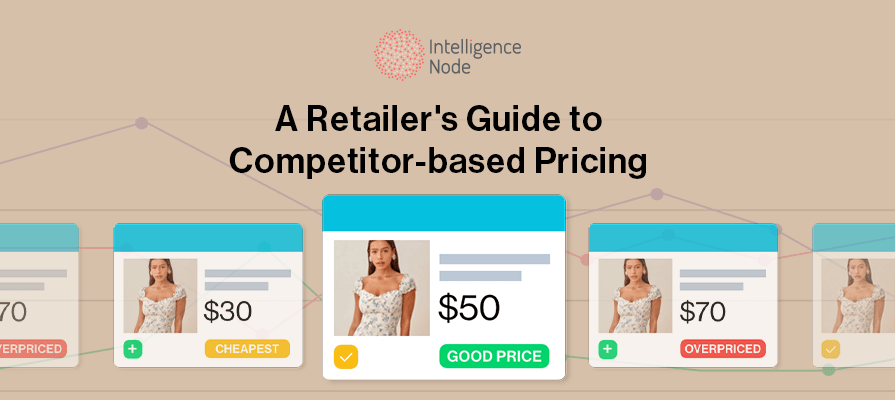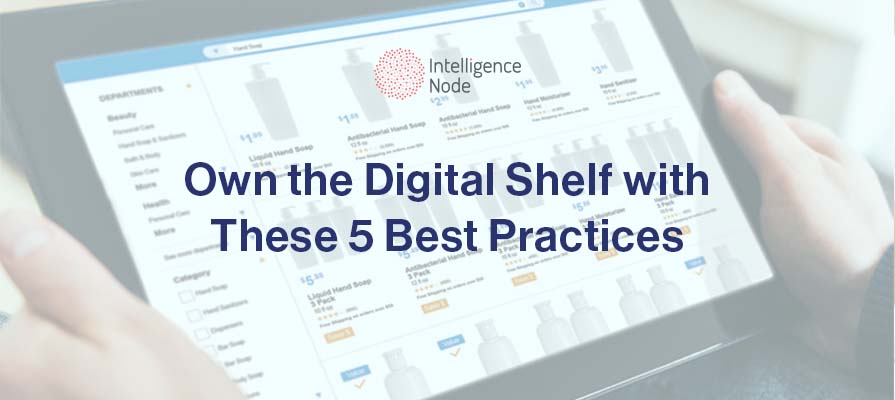As of 2023, Gen Z occupies 40% of the worldwide consumer population and is projected to hold a massive spending power of well over $360 billion in disposable income. Born into the digital era of free-flowing information and access to the internet, they have formed a demographic of individuals who have not only mastered the online retail ecosystem, but have established a distinct set of preferences and demands regarding their digital experiences across social media, the digital shelf, eCommerce as a whole, and even quality of user experience across various digital platforms.
Thus, to study the needs and expectations of this unique group, Intelligence Node conducted a survey with a thousand respondents to assess their approach to eCommerce and retail. Here, we analyzed consumers’ spending decisions for 2023, their views and preferences regarding modern retail experiences, recent trends, and more. For a worm’s eye view into the digital generation, the article below seeks to break down the responses we received from shoppers to give brands and retailers in-depth insights into Gen Z shopper trends and inform their strategic decisions for the year ahead.
Understanding the Digital Generation
As the first generation to grow up fully immersed in the digital age, Gen Z has a unique relationship with technology. On average, a Gen Z individual uses 5 different electronic devices ranging from mobile phones to desktop computers or tablets, amassing a monumental average screen time of 7.2 hours of pure video content consumption per day. Even 42% of millennials have reported being unable to go more than 5 hours without social media- a remarkable standard for screen time, and reflective of how intimately and consistently younger generations are immersed in their devices.
Unlike older generations, Gen Z is far more tech-savvy and comfortable with making purchases online as well. They know how to use technology to make informed buying decisions, where to find reliable product information, how to research and seek out deals, leveraging social media, eCommerce platforms, and the digital shelf for their shopping needs. Even positive reviews impact conversions for Gen Z, in contrast to older generations. This is a key factor behind the growing popularity of omnichannel shopping, as Gen Z was found to be most likely to use their mobile devices in-store to hunt for better prices, coupons, visit the retailer’s e-store, pay online, and explore alternative products and brands. Holistic optimization of the shopping experience both digitally and physically can help brands improve their conversion rates from Gen Z shoppers, even as the group’s enthusiasm for brick-and-mortar stores (as a space for experience and discovery) rises. They also prioritize convenience, speed, and personalization when it comes to their shopping experiences.
Social Commerce Drives Gen Z Product Trends
Gen Z, who primarily browse on mobile, is more likely to turn to social commerce on platforms like Instagram, TikTok, and Snapchat to discover new products, read reviews, and get recommendations from influencers. Shoppers aged 18-34 are more receptive to influencer marketing than other groups, and when paired with clear, easy-to-navigate sales platforms are likely to purchase items off social media. Further, as this demographic is exposed to a greater number of advertisements and recommendations they are most likely to be receptive to new products, brands, and trends. This reflects in how retailers have shifted their retail strategies in recent years– shifting to influencer marketing, topical push notifications, targeted ads, 8-second promotions, and more. A projection by App Annie even indicated that $290 billion would be spent on mobile advertising by 2022, as more and more businesses opt for digital-led promotions for younger consumers.
Overall, Gen Z’s unique approach to eCommerce is transforming the retail strategy and forcing brands to adapt to their changing expectations- in younger, and more tech-forward ways.
The (Purchasing) Power of Gen Z
Born between the mid-1990s and mid-2000s, Gen Z has come of age in an era of economic uncertainty, with many of them witnessing the effects of several financial crises over the years. In 2023, a large segment of this generation has begun to earn its own paychecks, making massive financial decisions regarding education, and many have moved away from their parents’ homes, opting to live and support themselves independently. However, this varies from household to household, and has resulted in a massive disparity in individual disposable incomes and budgets, and consequently, buying behavior, even against that of earlier generations. This year, our research indicates that Gen Z intends to reduce their spending substantially compared to older generations, in light of the recession.
Further, as Gen Z is cognizant of rising prices and shifting wages, it tends to be particularly cost-conscious. This focus on price has made them highly responsive to discounts and promotions. According to a survey by IBM, Gen Z is more likely than other generations to use coupons and discount codes, with many young shoppers often seeking out such deals on their mobiles in-store. However, this does not imply any compromise on quality. Today, it is common for young shoppers in fashion and beauty stores to research product “dupes” to replicate the benefits of high-end or luxury items at a fraction of the cost. Many Gen Z consumers also feel alienated from luxury brands and are extremely critical of online personas, brands, and influencers who position merchandise and product launches at exorbitant price points, boycotting and debunking misleading brand messaging.

Generational Values Create Waves
Their focus on sustainability and price sensitivity has fueled the growth of the re-commerce market, which includes second-hand sales of clothing, electronics, and other goods. eBay, one of the largest re-commerce platforms, has reported that 80% of its buyers are Gen Z, and one-third of its sellers are also Gen Z. This trend is likely to continue as Gen Z seeks to reduce its environmental footprint while still maintaining its frugal and cost-conscious approach to shopping.
However, research indicates that this behavior is not a matter of black-and-white pricing, but of perceived value. While reluctant to spend on overstated luxury brands and expensive products, Gen Z is willing to pay for purchases that matter to them. For example, according to our survey, speedy delivery and convenience are far more critical for people aged 18-24 than even additional shipping charges. This generation also values ethically produced, sustainable products and is willing to pay a premium to purchase them over alternatives. Interestingly, Gen Z’s perception of luxury has also switched to handmade, high-quality, locally sourced products from trusted brands, and is willing to shell out higher prices for small businesses that are often unable to offer competitive prices.
It has now become crucial to plan for a future in retail that spotlights the priorities and demands of younger shoppers. Positioning your brands to showcase value, quality, and ethical practices can help connect with younger audiences and impact brand loyalty and recall in the long run- when Gen Z will form the majority of shoppers worldwide.
Sustainable Product Trends Pave the Way
Compared to their predecessors, Gen Z has consistently demonstrated a strong interest and concern for sustainability issues- participating in global environmental conferences, heralding activism and awareness around climate change, and incorporating greener habits and products into their daily lives. Gen Z as a whole has brought choosing eco-friendly, organic, and locally made products into the mainstream, celebrating plant-based lifestyles and individually low carbon footprints. In fact, these topics have gained such popularity that oat milk, compostable (or bio-degradable) packaging, and even minimalist buying habits evolved from mere trends to deliberate lifestyle choices over the years. According to our survey, shoppers aged 25-44 are actually the most likely to spend a small premium on greener products. In addition to this, they actively seek out information on the production process, transparency, and fair labor practices of the brands they buy from. While shopping online, they tend to look for retailers who offer eco-friendly packaging, carbon-neutral shipping, and recyclable materials.
Expect Eco-friendly Spending in 2023
Shoppers under the age of 45, i.e., Gen Z and Millennials, are far more likely to increase their consumption of eco-friendly fashion in particular- and may even shop exclusively for green fashion. Gen Z also values ethical brands that are committed to reducing waste and sourcing materials sustainably. They often support companies that give back to social and environmental causes, and they also use social media to share their sustainable shopping experiences and influence others to make eco-friendly choices- sustainable influencers growing increasingly popular. Each of these observed trends and preferences is an indicator for major brands to start curating campaigns, influencer partnerships, and product messaging around the theme of sustainability. To target and attract the younger generation, retailers must prioritize sustainability efforts, showcase green features in their products, and be sure to avoid greenwashing their young shoppers.
Gen Z’s concern for sustainability is changing the way retailers market, sell, and promote their products, and it is shaping the future of the retail industry- away from the cheap, disposable, and non-durable, into locally sourced, well-priced, quality items.
Shaping Retail For Gen Z Interests
This year, prepare your eCommerce business for a new wave of digital shoppers. By partnering with Intelligence Node, your team can map out effective, powerful pricing and sales strategies using the most accurate data, and leverage consumer insights and predictions for an impactful year of sales and retail success.
For a closer look at consumer buying behavior in 2023, download the “CONSUMER REPORT” to unlock the latest statistics and analyses on American shoppers and equip your team with actionable insights and more for the year ahead. To see our state-of-the-art retail analytics in action, or explore the scope of AI-driven software solutions for your business, book a demo today.




